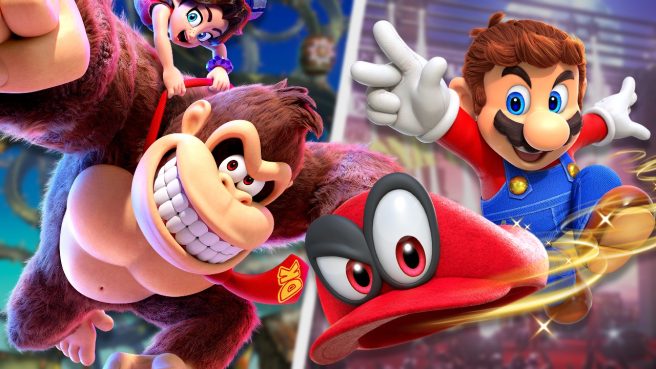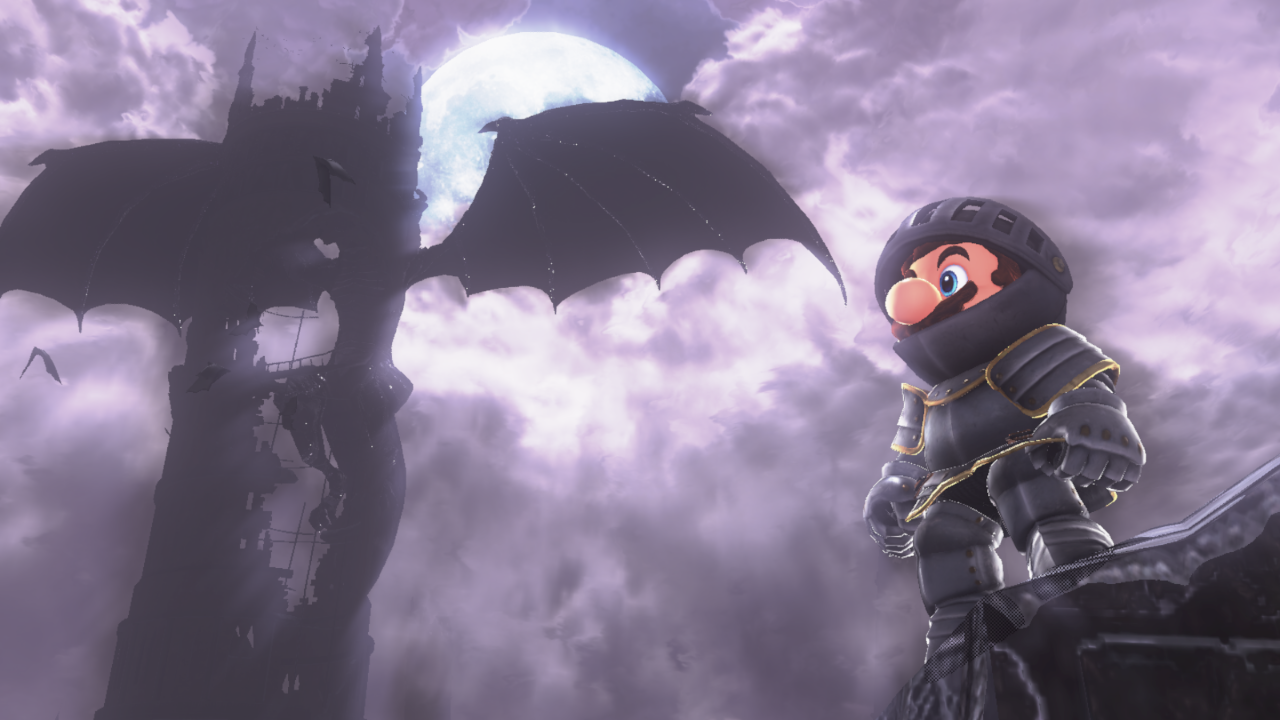Super Mario Odyssey vs. Donkey Kong Bananza – comparing the games, deciding which is better
Donkey Kong Bananza has been out for over a month now, and it’s been met with glowing reviews and plenty of excitement. I gave it a great score in my own review, but after writing it there was one specific question on my mind – is it better than Super Mario Odyssey? In a way, you could say comparison is the thief of joy, but this gave me an excuse to replay both Odyssey and Bananza to form a conclusive answer. And by “conclusive answer”, I mean “an opinion backed up by a couple thousand words’ worth of explanations”. So today, we’re doing a Super Mario Odyssey vs. Donkey Kong Bananza analysis, comparing their strengths and weaknesses, and seeing which one comes out on top – if any. Do keep in mind that we’ll eventually discuss spoilers for both games, so you might want to bookmark this post and come back later if you’re trying to avoid Donkey Kong Bananza’s ending details.
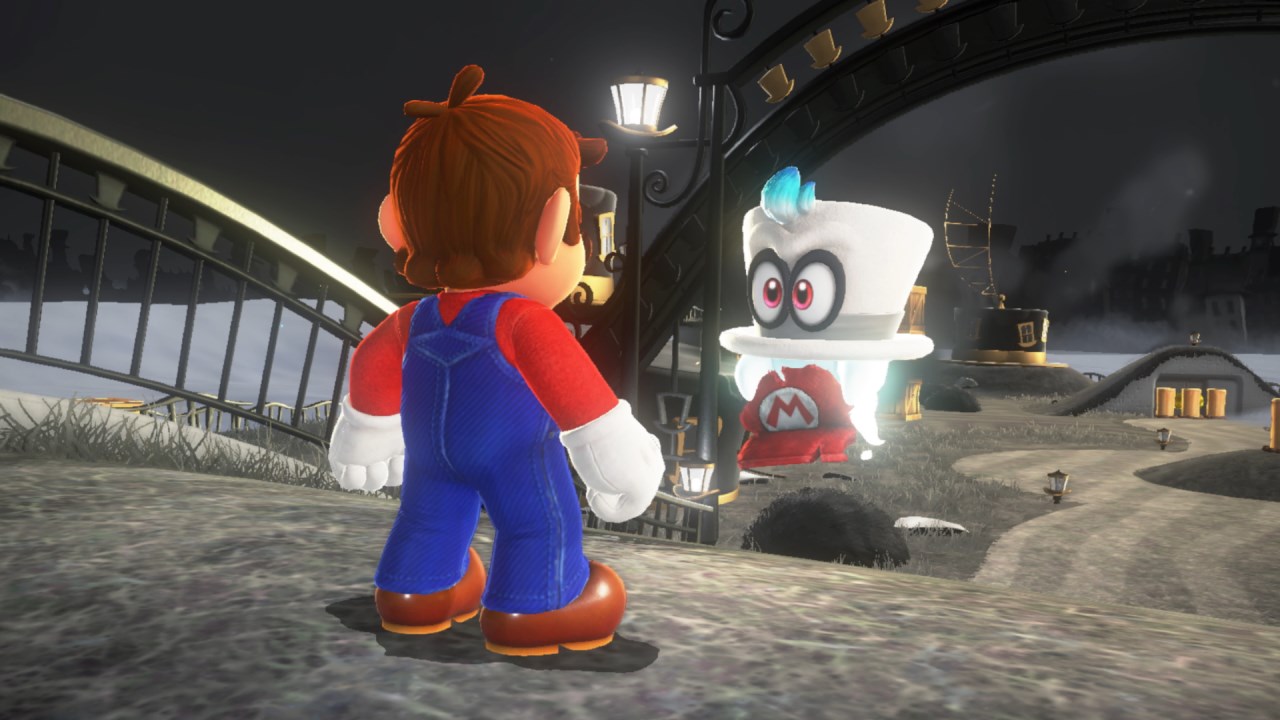
There’s one specific feature both Super Mario Odyssey and Donkey Kong Bananza have in common: very, very refined movement options. Both games have an incredibly high skill ceiling and allow you to show off your strategies in stylish and creative ways. In Super Mario Odyssey, Cappy lets you string together all sorts of bounces, jumps, and leaps that allow you to completely skip huge sections of the game. Some players even turn on multiplayer to unlock more advanced movement options – you can see these on full display in speedruns of the game. Odyssey doesn’t just feature a bunch of different jumps as its movement options, though – Mario can also perform a roll, which is often the fastest way to make your way through levels if you’re using motion controls.
Donkey Kong Bananza doesn’t have Cappy, but it turns out it doesn’t need him! DK himself can perform all sorts of moves that feel super satisfying to string together. Rolls, helicopter jumps, Bananza forms, aerial hand slaps, and especially Turf Surf mean your movement options are just about unlimited. Given how new the game is, players are still finding all sorts of hidden techniques – but from what we can tell so far, Bananza’s skill expression is incredibly high. If I were to pick which game has better controls and movement, I might give it to Bananza – but only by a very little bit. It’s important to note that Super Mario Odyssey also forces players to use motion controls if they want to use certain moves, which is problematic in handheld mode. Donkey Kong Bananza doesn’t force motion controls on the player at any point, which helped determine which game to give the figurative point to in this case. Make no mistake, though – Super Mario Odyssey’s movement options are absolutely stellar and shouldn’t be discounted in any way here.
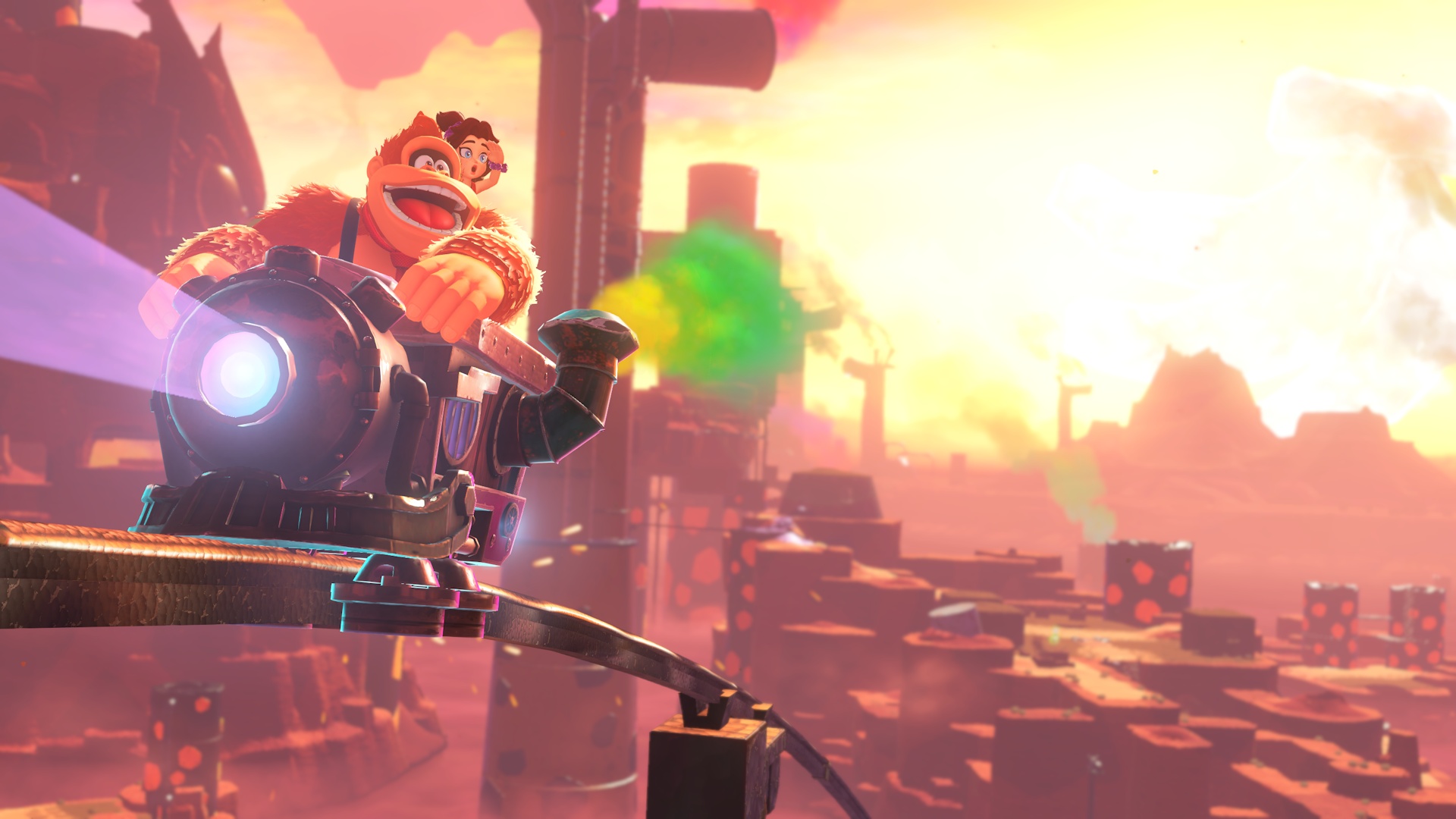
In terms of structure, Super Mario Odyssey and Donkey Kong Bananza are set up in a very similar way. That makes sense, given they’re from the same team. They also have about as many levels as each other, with Odyssey having kingdoms and Bananza having layers. Super Mario Odyssey’s levels are super memorable and fun to explore – their themes are generally more inspired than in Donkey Kong Bananza’s own layers. Odyssey’s kingdoms are based on your typical grass, forest, snow, and desert themes, but they all have a twist. The Cascade Kingdom would normally be your run-of-the-mill starter grassland area, but it’s decorated with a bunch of waterfalls and a dinosaur theme. The Sand Kingdom might sound like your traditional yellow desert area, but it’s actually frozen over when you first get there and it has a unique red look to it. Super Mario Odyssey’s Metro Kingdom might just be the best 3D platformer level Nintendo has ever made – it’s so incredibly detailed, and there’s a ton of secrets to find if you take your time and explore it from top to bottom. Of course, not all of Odyssey’s kingdoms are perfect – the Cloud Kingdom and Ruined Kingdom could’ve been a whole lot longer, for instance. It would’ve been particularly cool to see Nintendo’s interpretation of a full-scale Ruined Kingdom complete with additional Power Moons and such.
Donkey Kong Bananza’s actual level design might be better than in Super Mario Odyssey. Its level themes are a bit less inspired – at first glance, levels like the Canyon Layer, the Resort Layer, and the Forest Layer are kind of unimpressive. In the case of the Forest Layer, it’s a pretty typical “forest level swamped with purple poison” that we’ve seen in several Mario games before. That said, Donkey Kong Bananza’s layers are generally much, much larger than the kingdoms in Super Mario Odyssey. They also include sublayers, which is another point in the game’s favor.
Since we’re talking about levels, it’s a good time to talk about music, too. There’s not much to say about Super Mario Odyssey’s soundtrack that hasn’t been said already, but it’d be rather boring if we left it at that – its music is absolutely excellent. All of the kingdoms have incredibly memorable and catchy themes, and some of my favorites were the Wooded Kingdom and the Underground Moon Caverns. Musically, I do feel like the Lost Kingdom and Luncheon Kingdom slack off a bit, but for the most part Odyssey has consistently fantastic music. And it’s very easy to hear without having to turn the volume up, which is actually something you’ll need to do in Donkey Kong Bananza.
Some online discourse around Bananza states that its music is bland or forgettable. That’s definitely not true in my opinion – I do think it’s more atmospheric than Super Mario Odyssey’s soundtrack, however, which means it doesn’t play clear, defined melodies quite as often. More than a few tracks in Donkey Kong Bananza are clearly meant to be atmospheric, such as the theme for the Hilltop Layer and The Divide. This does make a sort of sense, though – Mario’s world is generally much more inhabited, whereas the Underground World in Donkey Kong Bananza supposedly hasn’t been explored by many people. The Donkey Kong Country series in general has always been about exploring the wilderness and taking in the atmosphere – just look at Stickerbrush Symphony from Donkey Kong Country 2, which is a fan-favorite (and has an excellent remake in this game). Additionally, Bananza doesn’t just have atmospheric music tracks. I found that the themes for the Lagoon Layer, the Canyon Layer, and the entire Planet Core section were really memorable. I think Super Mario Odyssey’s soundtrack is more consistently excellent, whereas Donkey Kong Bananza’s truly excellent tracks are farther and slightly fewer between. In the end, I do give this point to Odyssey – its music is so good and it feels like Bananza does lag behind a little bit in that regard.
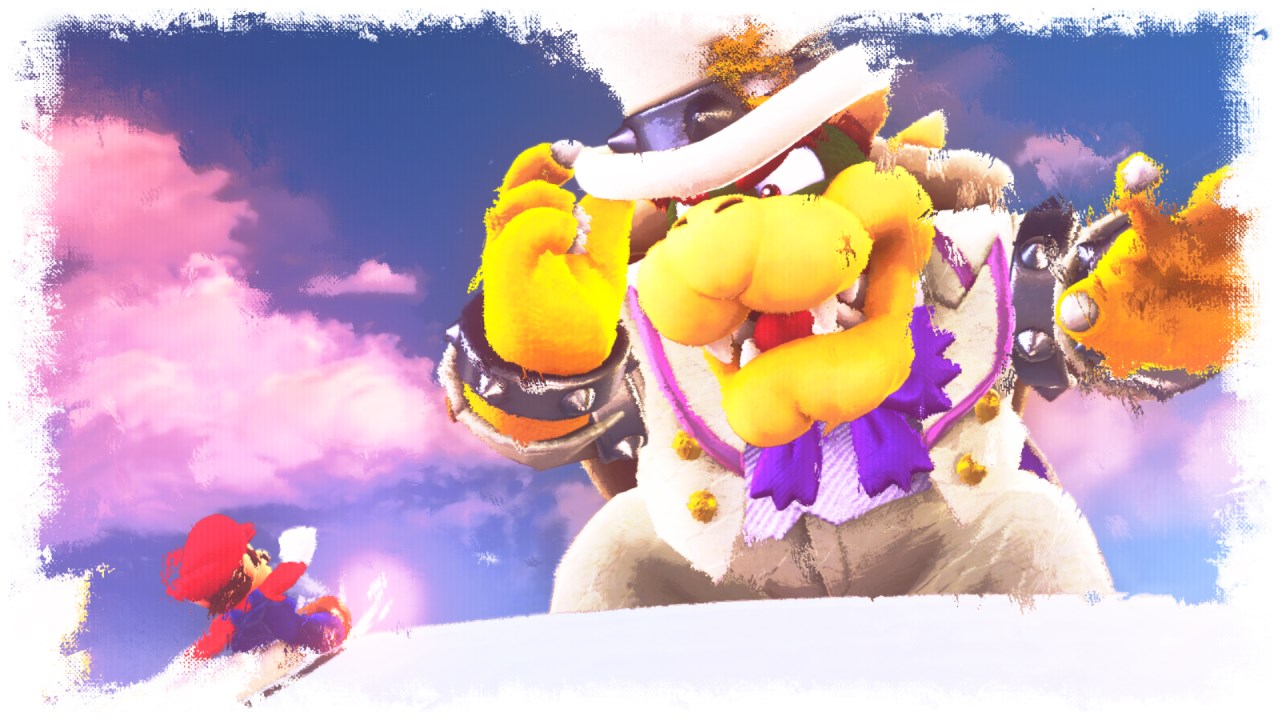
Next up, we’ve got the story, and to be perfectly clear Donkey Kong Bananza is absolutely getting this point. Story has never been a huge focus in any Mario game (or any Donkey Kong game either, to be fair), but it is a little bit lacking in Super Mario Odyssey. The concept of Bowser kidnapping Peach and planning a wedding is novel, and it’s actually really nice to see that all of the kingdoms are involved with this theme – each level has an item in it that Bowser wants, from flowers in the Wooded Kingdom to a big cake in the Snow Kingdom. That said, I think Super Mario Odyssey’s peak is the New Donk City festival. Running through New Donk City with Jump Up, Super Star playing is one of the most memorable and impactful moments in the entire series, and in my opinion nothing that comes afterward really lives up to that same high standard. This extends to the end of the game, too. Across Super Mario Odyssey’s story, the moon is shown in several cinematic shots, which provides a bit of foreshadowing. Indeed, Bowser wants to marry Peach on the moon, and so Mario heads there as the final major level of the game. Odyssey’s actual final boss is fairly disappointing, though – it’s simply a slightly tougher version of the same Bowser fight from the Cloud Kingdom earlier in the game. The final sequence where you play as Bowser is really cool, but I don’t think it’s an appropriate substitute for an epic final showdown. It would have been a great supplement for one, though!
From the very beginning, it feels like Donkey Kong Bananza’s story has more stakes. Void Kong wants to get to the center of the Earth to have one of his wishes granted, and he originally kidnapped Pauline so he could use her voice to awaken the Banandium Root. Pauline herself also goes through a small character arc from the beginning of the game to the end – she becomes more open with herself and her singing, but as shown by Bananza’s ending, she also starts thinking of others more often instead of just herself. The Planet Core feels very important once you arrive, much more so than the Moon Kingdom. By the time you get there, you’ll have just seen King K. Rool reawaken and establish himself as an antagonist for the first time in a main series Donkey Kong game since Donkey Kong 64. And given that the Planet Core is crawling with powered-up Kremlings, it makes the whole sequence feel much more impactful. Void Kong’s wish was for money, but you know that King K. Rool’s wish on the Banandium Root is going to be much, much worse. You have to get to the center of the Earth before he does, or something truly terrible will happen – whereas in Super Mario Odyssey, you break into the wedding hall only to see Bowser and Peach fighting over a wedding band. Definitely not as high-stakes.
It goes without saying, then, that Donkey Kong Bananza’s final boss sequence absolutely blows Super Mario Odyssey out of the water. It’s a full, three-phase King K. Rool battle that ends in New Donk City versus a rehashed Bowser fight nearly identical to the previous one. It feels like Bananza’s devs really wanted to re-establish King K. Rool as a huge threat, and his takeover of New Donk City is going to prove itself to be one of DK’s most memorable moments in the long run. King K. Rool is also inherently more interesting as a villain, mostly due to how little Nintendo has utilized him. Bowser as the main antagonist has been done to death, and I personally like him better when he’s portrayed as a reluctant ally or anti-hero. That’s historically never been a thing in mainline 3D Mario games, though.
One final note here involving the story – Super Mario Odyssey introduces the Broodals, whereas Donkey Kong Bananza introduces Void Co, which includes Void Kong, Poppy Kong, and Grumpy Kong. Even though they’re fairly typical villains by Nintendo standards, I like their dynamic – Void Kong is clearly an abusive and wimpy boss, and that extends to his boss fight as well. Every time DK tries to take him down, Void flees or creates walls to waste time. He’s such a horrible boss, in fact, that both Poppy Kong and Grumpy Kong wind up quitting the team entirely. I’m also a fan of Poppy Kong refusing to work overtime unless paid to do so – we need more of that in real life. Either way, Poppy and Grumpy eventually wind up as somewhat friendly-ish allies to Donkey Kong, and I like that they experience small character arcs even though they’re not really intended to be deep. The Broodals, on the other hand, don’t really have any personality traits whatsoever and are just intended to serve as mid-bosses. Once they’re defeated for the last time, they disappear forever. We don’t even get to see them directly interact with Bowser in any way. I really respect that Bananza gave its new characters more time in the spotlight and actually made them likable even though they’re antagonists.
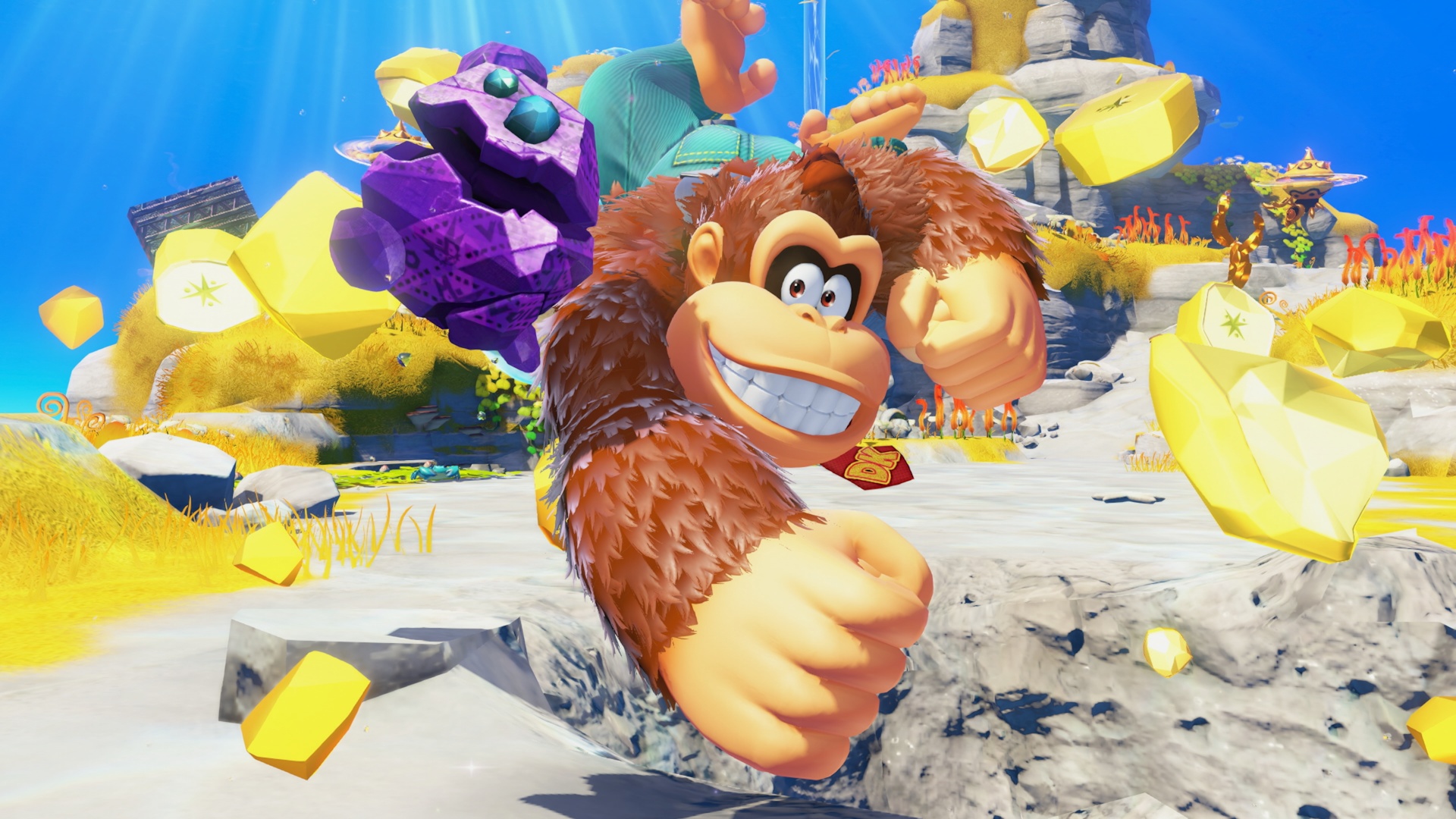
There’s another important point we haven’t touched on yet: Power Moons versus Banandium Gems. Despite being almost identical in concept, Super Mario Odyssey and Donkey Kong Bananza handle them much differently. In Super Mario Odyssey, Power Moons are more than plentiful – you’ll find them around every single corner of every single kingdom. This is supposedly because the game was designed to be played on the go, in that you can play for 15 minutes and find 3 Power Moons and make some sort of progress even if you don’t play for very long per session. I’m not too sure if I agree with this philosophy, especially given what some particularly tricky Power Moons are locked behind. Almost every kingdom has Moons gated behind Hint Art, planting seeds and waiting in real time for them to grow, tracking down a single bird that flies throughout a given kingdom, and the like. These Power Moons are inherently repetitive to claim, and not in a good way – it sort of feels like the game is actively wasting the player’s time. Not to mention, tons of Moons wind up sitting out in the open for you to collect – and since there’s no real purpose to collecting Moons other than to advance the counter, it feels somewhat pointless. More on that in just a moment.
Donkey Kong Bananza’s Banandium Gems are generally placed much better, in my opinion. None of them are locked behind inherently repetitive tasks – just about all of them are cleverly hidden in the overworld or in challenge areas. A few of them are still formulaic, like the Shifty Smash bananas and especially the Growtone bananas that require you to pay tons and tons of gold. The point is, though, that far fewer Banandium Gems make you say “ugh, I don’t want to do this” compared to Super Mario Odyssey’s Power Moons. I don’t think many players are particularly excited to figure out a vague piece of Hint Art – some might love that kind of challenge, but it does feel somewhat out of place compared to the rest of the game’s moons.
Another big point in Bananza’s favor here is that Banandium Gems unlock Skill Points. Another big point is that Bananza does not require you to get any Banandium Gems at all, so you can actually skip ahead to the next kingdom whenever you want. In Super Mario Odyssey, you have to obtain a certain number of Power Moons before you can move on to the next kingdom. This requirement simply isn’t there in Donkey Kong Bananza, which gives players more freedom to do whatever they want. If you want to stick around and find as many Banandium Gems as possible, you can do that! If you don’t care for collecting and just want to skip ahead to the boss, you can do that too. It also facilitates interesting speedruns and tricks, if you’re into watching video content like that.
Finally, we’ve got one last major point here: the art direction. Both Super Mario Odyssey and Donkey Kong Bananza look absolutely fantastic. Odyssey got a facelift on Nintendo Switch 2, as it now runs at a higher resolution and some of its ground textures were even completely reworked. So in this section, we’re not talking about the quality of the graphics, per se, but rather the design decisions of each game’s characters and worlds. Starting with Donkey Kong Bananza, it has a generally consistent design throughout. The Underground World is most definitely wilderness-themed, with all sorts of animal NPCs like zebras and ostriches as well as Fractones, who I eventually grew to quite like. That said, Bananza’s art consistency doesn’t make it feel sterile – a good example of what I mean here would be the New Super Mario Bros. series, which is so consistent that it winds up feeling boring. Bananza is consistent, but it also introduces tons of new elements, characters, mechanics, and environments.
Super Mario Odyssey looks fantastic, but it certainly isn’t consistent. I think that’s for a good reason, though. Areas like the Cascade Kingdom, the Cap Kingdom, and the Sand Kingdom are all pretty consistent with each other – you can reasonably believe they’re all part of the same world. Then you get to the Metro Kingdom, which is really fun to play, but it feels out of place thanks to the oddly-proportioned New Donk City residents, who are as tall as real humans. In early concept art for Super Mario Odyssey, New Donk City was supposed to be more colorful and its residents were actually proportioned more like human characters in The Super Mario Bros. Movie, which would have made the city feel more consistent with the rest of the franchise. This art style inconsistency does carry over to the Ruined Kingdom – that dragon has an awesome boss fight, but it’s meant to feel out of place on purpose. Super Mario Odyssey released in 2017, during a time when many players thought the series was starting to stagnate with its ideas (especially given that the Wii U era, which was generally very safe, had just ended). Including things like the New Donk City residents and the Ruined Dragon was probably Nintendo’s way of proving that they still had fresh ideas and that they were still willing to experiment with their flagship character. Now that the shock value has worn off, though, it does feel pretty odd. I’m sure this is a polarizing opinion, though, because some players might like how out of place they feel.
Let’s wrap things up with one minor point: the postgame. Overall, it’s structured very similarly between Super Mario Odyssey and Donkey Kong Bananza, but Odyssey has a leg up in the form of the Mushroom Kingdom. It’s full of awesome little references and you even get to play as Yoshi, which is a fantastic treat for those who have finished the game. Bananza has Ingot Isle, which includes things like boss rush and the like, but it’s still an area you already visited. New postgame areas aside, both Odyssey and Bananza get plenty of new collectibles added to each level. Odyssey has 880 unique Power Moons in total, whereas Bananza has 777 unique Banandium Gems.
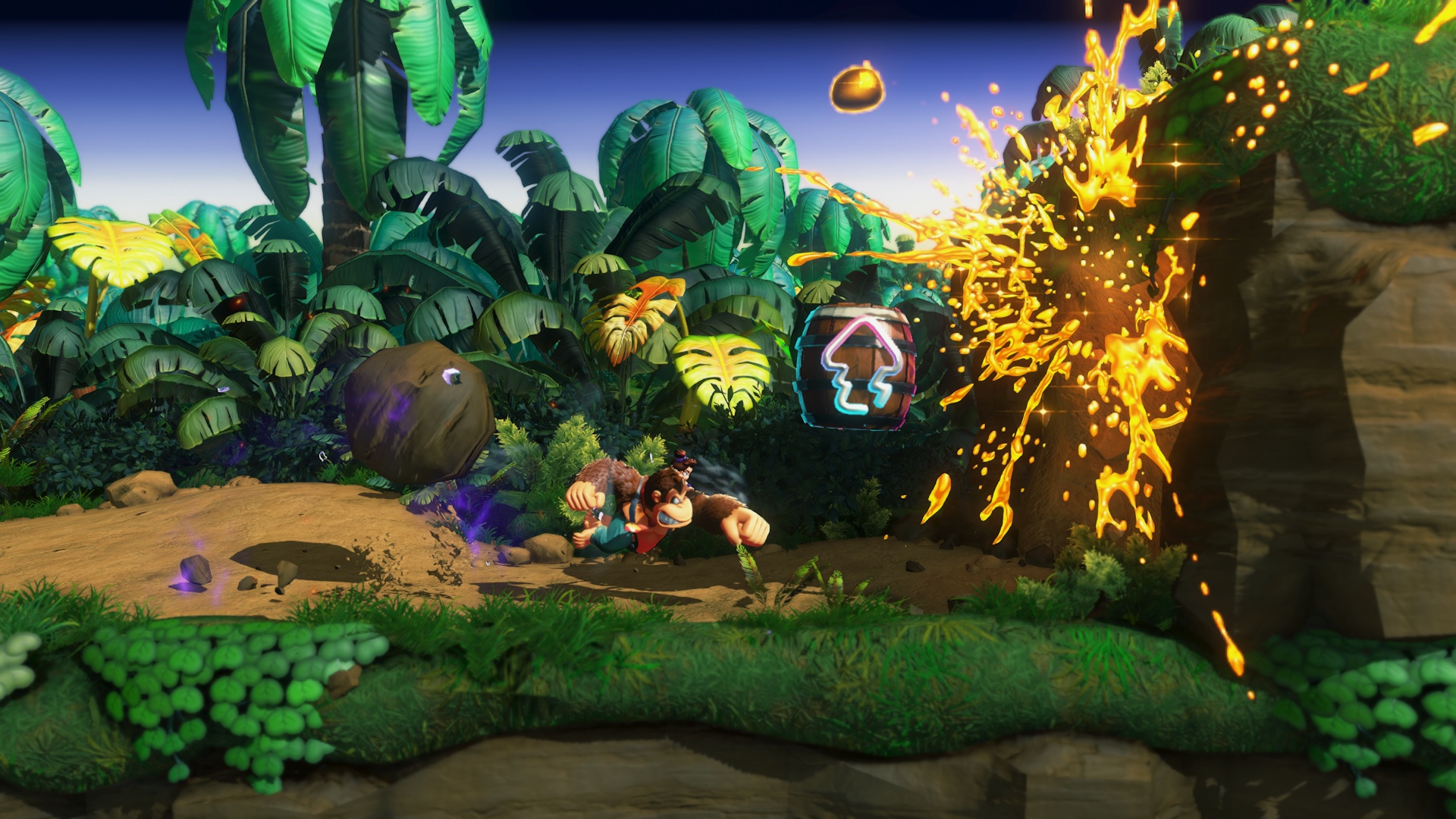
Even though I’ve written several thousand words on the matter by now, it’s very difficult to compare Super Mario Odyssey and Donkey Kong Bananza. At the end of the day, you should play both if you’re able – they’re some of the best 3D platformers of all time. To sum up each game’s unique strengths, then: Super Mario Odyssey has better normal boss battles, more memorable kingdom themes, and excellent music. Donkey Kong Bananza has larger, better-designed levels, a better story and final boss, a more addictive gameplay loop, and better characters. By the way, something I noticed – Bananza doesn’t feature underwater swimming levels in any way. That seems a strange omission given that underwater levels have always been a staple of the Donkey Kong Country games. Weird! It’s also important to note that Donkey Kong Bananza has some frame drops towards the end of the game which Super Mario Odyssey does not have. They’re not a huge deal, but they are noticeable, so that’s something to consider as well.
After reading my analysis, and thinking about Super Mario Odyssey vs. Donkey Kong Bananza, which game do you think comes out on top for you – or are they tied? Just because we compared them today doesn’t mean one or the other has to “win”. Super Mario Odyssey and Donkey Kong Bananza are both great games – I personally like Bananza a little more, and that makes sense since the development team has had time to even further improve on top of what was already a fantastic game. I’m really excited to see what this team makes next, though it’s probably going to be a long time before we see what it is.
